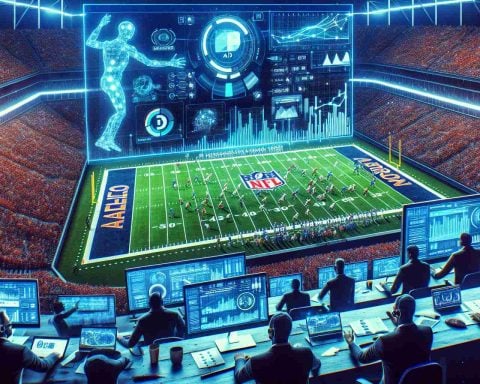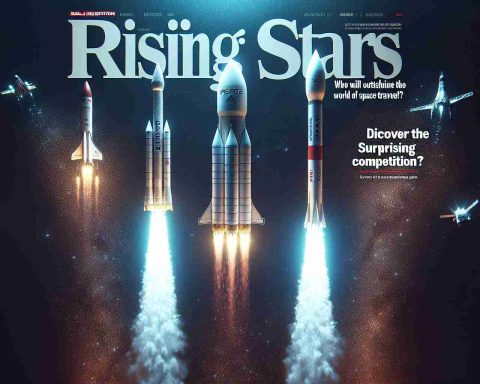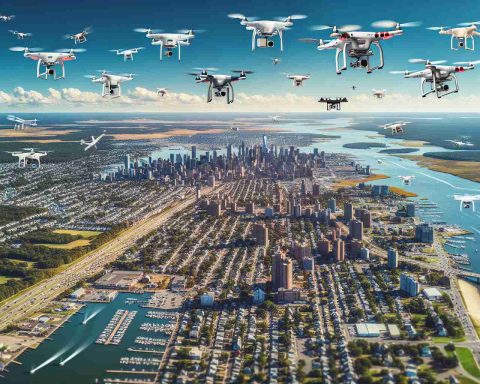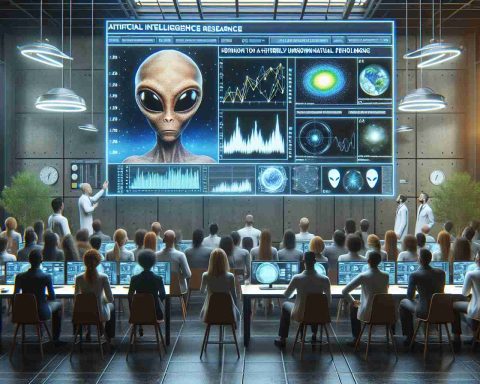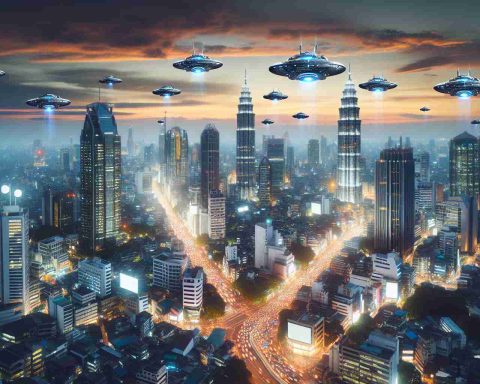In a modern twist on the age-old fascination with unidentified flying objects, New Jersey’s skies have transformed into a theater of technological marvels and mysteries, captivating both the public and researchers. The once-simple tales of strange lights and flying saucers are evolving, reframed by the advent of advanced drone technologies and AI-driven analytics.
Technology Meets the Skies
Recent occurrences involving unidentified aerial phenomena (UAP) in New Jersey highlight the impressive speed and maneuverability of these objects, demonstrating capabilities far beyond conventional aircraft. The rapid advancement of drone technology raises compelling questions: are these sightings mere spectacles of human innovation masquerading as extraterrestrial events?
Tech Integration and Exploration
With the widespread use of smartphones equipped with high-definition cameras, coupled with AI-powered image analysis, capturing and interpreting UFO encounters has become a reality for everyday observers. This technological evolution invites speculation—are these sightings the work of tech enthusiasts crafting drones to perform as mesmerizing airborne displays?
Balancing Mystery and Security
The implications of drones mistaken for UFOs extend beyond intrigue into the realm of security, posing challenges for regulators aiming to differentiate between harmless drones and genuine threats. As airspace becomes more congested, understanding these phenomena accurately is imperative.
Future Transformations
The anticipated growth of drone technology promises to blur further the lines between what we recognize as science fiction and reality. This development presses researchers to enhance their tools and methodologies to unravel this complex narrative.
As New Jersey’s skies reflect an intersection of ingenuity and enigma, the conversation around UFOs and our place in the cosmos remains ever more compelling.
The Sky’s Mirror: How Drone Technology Shapes Our Future
The convergence of drone technology and AI-driven analytics, as displayed in New Jersey’s UFO-like aerial phenomena, holds significant implications for the environment, humanity, and the global economy. As these technologies progress, their potential to influence various aspects of our world cannot be underestimated.
Environmental Impact
Drone technology offers promising applications in environmental monitoring and conservation. These advanced aerial tools can track wildlife, monitor deforestation, and assess the health of ecosystems with greater efficiency and precision than traditional methods. However, the widespread use of drones might also lead to increased noise pollution and disturbances in natural habitats, posing challenges for wildlife and ecosystems.
Societal Applications
On the human front, drones equipped with AI capabilities can transform industries such as agriculture, logistics, and disaster response. In agriculture, drones can optimize crop management through precise data collection, potentially leading to increased yields and more sustainable farming practices. In disaster scenarios, drones can provide real-time aerial assessments, aiding in faster and more efficient responses to emergencies. However, the increasing prevalence of drones also raises privacy concerns, as their ability to capture images and videos from the sky can infringe on personal spaces.
Economic Shift
Economically, the drone industry is poised to become a significant driver of growth. As companies invest in drone technology, new jobs in engineering, manufacturing, and data analysis are created. The logistics sector, in particular, stands to gain considerably, with companies exploring drone deliveries as a cost-effective and timely option. Nevertheless, this technological shift may disrupt existing job markets, particularly in transportation, leading to workforce displacement and necessitating retraining and education strategies.
Future Implications For Humanity
The fusion of drone technology and AI represents a step toward a future where the boundaries between reality and science fiction blur. This technological evolution compels humanity to rethink privacy, security, and ethical standards. How society addresses these challenges will shape our integration of emerging technologies, ensuring they benefit humanity while mitigating potential harm.
In conclusion, as New Jersey’s skies become a canvas for technological wonders, the world stands on the brink of transformations that will redefine our interactions with the environment, economy, and society. These advancements drive us to contemplate our place in an increasingly interconnected and technologically advanced world, urging us to harness these tools for the greater good of humanity.
Exploring the Mystery of New Jersey’s Skies: Drones, UFOs, and Future Innovations
The skies over New Jersey have long been a stage for the intrigue of unidentified flying phenomena (UAP), but recent technological strides have added layers of complexity to these encounters. What was once dominated by tales of simple flying saucers has now evolved into a discussion enriched by drones and artificial intelligence (AI).
Drone Technology: A New Age of Aerial Phenomena
Drones today exhibit impressive speed and maneuverability, often prompting questions about their origins—are they merely sophisticated artifacts of human ingenuity mistaken for extraterrestrial crafts? The capabilities of modern drones continue to challenge our understanding of aerial phenomena. With advancements in their design and function, distinguishing between drones and potential UAP is becoming increasingly complicated. These questions open doors to deeper discussions about the capabilities and possible implications of drones in our skies.
AI and Smartphone Integration: Revolutionizing UFO Documentation
The rise of smartphones with high-quality cameras, paired with AI-driven image analytics, has revolutionized UFO documentation. Now, everyday observers can capture high-definition images and videos of these enigmatic aerial displays. The use of AI further refines these captures, analyzing and sometimes even enhancing the footage to provide better clarity. This shift enables enthusiasts and researchers alike to delve into UFO sightings with greater precision, prompting a reevaluation of what these mysterious objects could be.
Security Concerns Amidst the Fascination
As fascinating as these drone and UFO sightings might be, they also present significant security challenges. The distinction between recreational drones and genuine airborne threats is crucial, especially as airspace usage continues to grow. Regulatory bodies are now tasked with developing and implementing strategies that enhance airspace safety without stifling innovation.
Future Trends in Drone and UFO Exploration
Looking ahead, the expected advancements in drone technology promise to blur the lines between science fiction and reality even further. This anticipated growth demands that researchers upgrade their tools and protocols, seeking new ways to unravel the complex narrative of unidentified aerial phenomena. The evolving conversation challenges the scientific community to push the boundaries of current methodologies, ensuring a deeper understanding of what these sightings mean for our understanding of the universe.
Navigating the Intersection of Technology and Mystery
As New Jersey’s skies continue to serve as an intersection of technological innovation and unending mystery, the dialogue surrounding UFOs maintains its allure. This evolving narrative not only captivates public interest but also stimulates scientific inquiry, questioning our place in the cosmos and the potential technological marvels that inhabit our skies.
For more insights into how technology is shaping our world, visit NASA.











